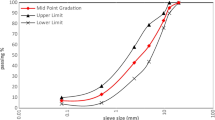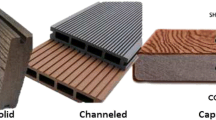Abstract
The aim of the study was to understand how the T-peel strength of heat-welded seams in polymer-modified bituminous roofing membranes depends on the welding method and on the material properties.
Seam samples of ten different commercial products, three of Atactic Polypropylene (APP)-modified bitumen and seven of Styrene-Butadiene-Styrene copolymer (SBS)-modified bitumen, were prepared by different welding methods with different heating media, i.e. hot air or gas torch, welding speed and weight of pressure roller joining seams. The welding conditions were precisely controlled during the preparation, and the temperature in the seam sample was measured.
T-peel tests were carried out at 23°C and at −10°C on specimens cut out from each heat-welded sample to measure the T-peel strengths. The fracture propagation during T-peel testing was studied visually. Some seam specimens were also studied using microscopy.
In order to identify the material properties and differences in the material compositions influencing the seam strengths, each product was characterised by different chemical and thermal methods, which were described in recently published reports [1,2].
It was concluded that the choice of welding speed and pressure weight for the optimum design of welding machine should make reference to the thermal properties, such as specific heat, and to the rheological properties, such as viscosity.
Résumé
Le but de cette étude était de déterminer l'influence exercée par la méthode de soudage et les caractéristiques du matériau sur la résistance au «T-peel test» des joints soudés à chaud des lés d'étanchéité de bitume polymère (LBP) pour toitures.
Des éprouvettes de joints soudés de dix produits commerciaux, trois à base de bitume modifié par du polypropylène atactique (APP) et sept à base de bitume modifié par un copolymère styrène-butadiène-styrène (SBS), ont été confectionnées avec différentes méthodes de soudage utilisant des agents de chauffage divers, air chaud ou torche à gaz, ainsi que des vitesses et des pressions de soudage différentes. Durant la confection des éprouvettes, on a contrôlé avec précision les conditions de soudage et on a procédé à la mesure de la température des éprouvettes.
Les «T-peel tests» ont été effectués à 23°C et à −10°C sur des éprouvettes de chacun des joints soudés afin de mesurer leur résistance au ‘T-peel test». La propagation des fissures a été examinée visuellement. Sur certaines éprouvettes de joints soudés on a également procédé à un examen microscopique.
Afin de déterminer les caractéristiques et les différences de composition du matériau exerçant une influence sur la résistance des joints soudés, chaque produit a été caractérisé au moyen de différentes méthodes d'analyse chimique et thermique qui sont décrites dans les rapports [1,2] précédemment publiés.
Les conclusions de cette étude sont que le choix de la vitesse de soudage et de la force de pression pour le réglage optimal de la machine de soudage devraient s'effectuer en fonction des caractéristiques thermiques, telles que la chaleur spécifique, et de caractéristiques rhéologiques, telles que la viscosité des lés d'étanchéité de bitume polymère.
Similar content being viewed by others
References
Oba, K. and Hugener, M., ‘Characterization of polymer-modified bituminous roofing membranes using chromatography’Materials and Structures,28, (1995), 534–544.
Oba, K. and Roller, A., ‘Characterization of polymer-modified bituminous roofing membranes using thermal analysis’,Materials and Structures,28, (1995), 596–603.
Oba, K. and Björk, F., ‘The influence of water on the mechanical strength of seams in single-ply coverings for low-slope roofs’,Kautsch. Gummi, Kunstst,45, (3), (1992), 195–202.
Rossiter, W. J., Jr., ‘Single-ply roofing—a decade of change’,ASTM Standardization News, Sep., (1985), 32–34.
Croce, S., ‘Processual analysis of flat roofs pathology—Field experiences with pitched over-roofs’, in J. O. May (Ed) Roofs and Roofing, Ellis Horwood Ltd., Chichester, (1988), 123–137.
Baxter, D., ‘Applicators must adjust to differences among modified bitumens’,Professional Roofing,21, (2), (1991), 52–60.
Cullen, W. C., ‘Project pinpoint's database continues to grow’,Professional Roofing,20, (4), (1990), 28–31.
Höglund, I., Espling, R. and Hilding, G., ‘Functional studies of flat roofs covered with membranes of butyl rubber’,Building Research and Practice,17, (5), (1989), 309–312.
Ullman, H., ‘Försäkringsbolagens säkerhetsföreskrifter för heta arbeten på tak’,Bygg & Teknik,84, (2), (1992), 24–27.
Berglund, M., ‘Skärpta säkerhetsbestämmelser betyder: Ingen fara på taket’,Bygg & Teknik,83, (2), (1991), 39–40.
Magnusson, S-E., ‘Taken brinner alldeles för lätt’,Brand & Räddning,6, (12), (1991), 26–29.
Oba, K. and Björk, F., ‘Welding methods of single-ply polymer-modified bituminous roofing materials’,Fire and Materials,18, (1994), 351–358.
Kinloch, A. J., ‘Adhesion and adhesives’, Chapman and Hall, London, (1987).
Oba, K. and Björk, F., ‘The relationship between welding temperature and T-peel strength of heat-welded seams in single-ply root coverings’,J. Adhesion Sci. Technol,7, No. 9, (1993), 987–999.
Watanabe, H. and Rossiter, W. J., ‘Effects of adhesive thickness, open time and surface cleanliness on the peel strength of adhesive-bonded seams of EPDM rubber membrane’, in Roofing Research and Standards Development, Vol. 2, ASTM STP1088, (1990), 21–36.
Hean, S., Beständigkeit von Polymerbitumen-Dichtungshahnen beim Gussasphalt-Einbau. EMPA-Nr. FE 137′089. Swiss Federal Laboratories for Materials Testing and Research, Switzerland, (1992).
Hendriks, N. A. and Woonink R., ‘Field and laboratory investigations of the crazing phenomena of APP-modified bitumen sheetings’, in Proceedings of VIIIth International Roofing & Waterproofing Congress. International Waterproofing Association, (1992), 177–195.
Baxter, R. and Kearney, T., ‘Weathering characteristics of polymer-modified asphalt roofing membrane’ in Proceedings of the 1991 International Symposium on Roofing Technology. National Roofing Contractors Association, Illinois, (1991), 453–458.
Mathieu, L. and Pagnini, D., ‘Aging of polyalphaolefinic modified bitumen for roofing membranes’, ibid, (1991), 459–466.
Diebold, T., Polymer-modified bitumen SBS vs. APP. Soprema S.A., France (1988).
Heimerikx, G.W.J., ‘Styrenic block copolymers for bitumen-based roofing felt: Tailoring to application’, in Proceedings of VIIth International Roofing & Waterproofing Congress. International Waterproofing Association, (1992), 393–401.
Oba, K. and Partl, M. N., Seam performance of polymer-modified bituminous roofing sheets: EMPA-Forschungs- und Arbeitsbericht No. 136/6: FE 147′135. Swiss Federal Laboratories for Materials Testing and Research, Switzerland, (1994).
Author information
Authors and Affiliations
Rights and permissions
About this article
Cite this article
Oba, K., Hean, S. & Björk, F. Study on seam performance of polymer-modified bituminous roofing membranes using T-peel test and microscopy. Mat. Struct. 29, 105–115 (1996). https://doi.org/10.1007/BF02486200
Published:
Issue Date:
DOI: https://doi.org/10.1007/BF02486200




